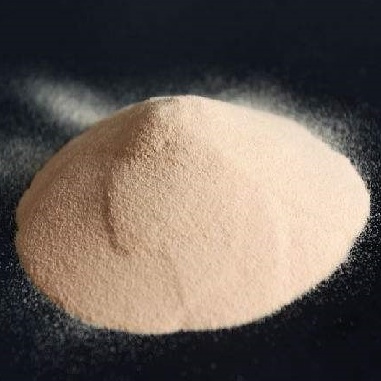BRIEF INTRODUCTION:
Pea peptide is one kind of bioactive peptide that made by through directional enzyme cutting technology which use the biological compound enzyme on the pea protein. Pea peptide contains eight amino acids that the body cannot synthesize by itself, and their ratios are close to the patterns recommended by FAO/WHO. The good efficacy and excellent functional properties of peptide allow pea peptide to be widely used in food and health care products.
APPLICATION:
1. Pea peptide have high water-holding and oil absorption properties and good gel forming property, which can be used in hams and other meat products as an excellent additive.
2. Pea polypeptide has a certain degree of foamability and foam stability, which can partially replace eggs to be added to pastry products.
3. Pea peptide has excellent emulsifiability and emulsion stability, which can be used as emulsifiers for various types of foods. Pea peptide can quickly emulsify fat, to prepare sausages with good emulsifiability. Sausages made in this way are very tasty with high nutritional values.
4. If added into biscuits, pea peptide can enhance the flavor and strengthen the proteins, in addition, it can be developed into health foods having different functions.
5. Pea peptide can also be used in flour products. For example, adding pea peptide into flour can improve the nutritional value, intensity and gluten strength of noodles, and thus improve the appearance and taste of flour foods.
6. Pea peptide liquor. The technological problem that pea contains a large amount of proteins (20%) and fat cannot be fermented to make liquors is successfully tackled by using biotechnology. This type of liquor is rich in peptide which can not only be absorbed by the human body, but also enhance the immune function, demonstrating its active role in inhibiting oxidation, scavenging free radicals, lowering blood pressure, blood fat and cholesterol, and resisting cancer, fatigue and aging.
7. When used in cosmetics, pea peptide can inhibit elastase, protect elastin, improve skin elasticity, increase skin tightness, and stimulate the synthesis of collagen, elastin, and glycosaminoglycan (chondroitin sulfate).
8. Recommended nutrient intake: 3-4g/day, infants prohibited.
TECHNICAL SPECIFICATIONS:
Physical index
|
Standard |
|
|
Appearance |
White or light yellow powder |
|
Odor and taste |
Odor and taste of pea peptide, no abnormal odor and taste |
|
No impurity that can be seen by eyes |
|
|
Total protein (%) |
|
|
Total pea peptides (%) |
≥75.0 |
|
Moisture (%) |
≤8.0 |
|
Ash (%) |
≤6.5 |
|
PH (10.0% water solution) |
6.5-7.5 |
Molecular weight range (Dalton, %)
|
200-2000 |
More than 85.0% |
|
>2000 |
Less than 15.0% |
Microbiological index
|
Items |
Standard |
|
Total Bacteria (cfu/g) |
≤1000 |
|
Coliforms (MPN/100g) |
≤90 |
|
Mold and Yeast (cfu/g) |
≤50 |
|
Pathogen |
Negative |
Contaminant index
|
Items |
Standard |
|
As (as per As, ppm) |
≤0.3 |
|
Pb (as per Pb, ppm) |
≤1.0 |
|
Cd (as per Cd, ppm) |
≤0.1 |
|
Aflatoxin B1 (ug/kg) |
≤5.0 |
PACKAGE:
Net weight: 20kgs, multi-wall, poly-lined paper bags.
STORAGE AND TRANSPORTATION:
The product should be stored on the pallet, in a light-proof, well-closed, cool, dry and ventilated place (at a temperature of ≤23℃ and a relative humidity of ≤60%). Following the above guidelines should insure 24-month shelf life. After opening the original packing, the complete content should be used immediately. Material can be microbiologically contaminated from unhygienic environment. It is a non-dangerous product and can be transported as a common chemical product. Protect them from sunshine or rain. Must not be loaded and transported with toxic, hazard outstand polluting substances. Handle with care in order to avoid damaging the package.
QUALITY AND SAFETY ASSURANCE:
Controlled under certified quality system ISO and product safety is ensured by established safety system.
TEST METHOD: Full details and test method are available on request.
 Tel: +86-532-86990169|
Tel: +86-532-86990169| Email: sales@dailyfoodgroup.cn
Email: sales@dailyfoodgroup.cn

